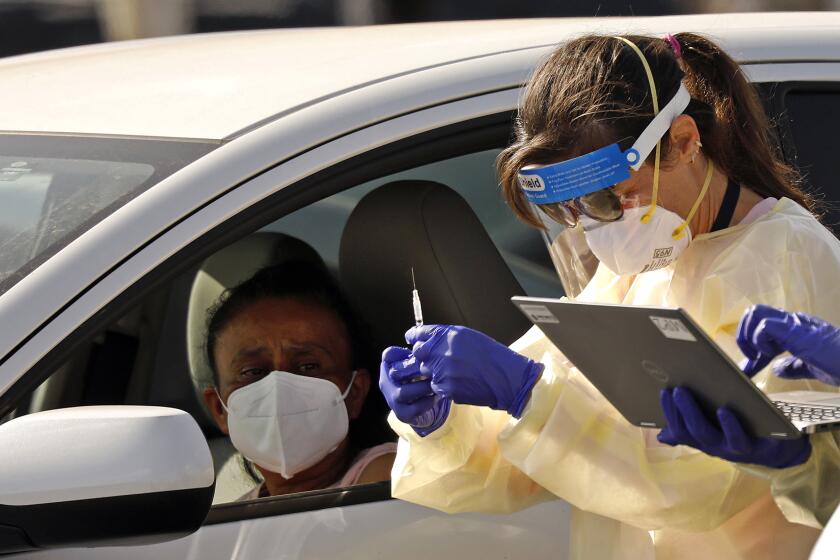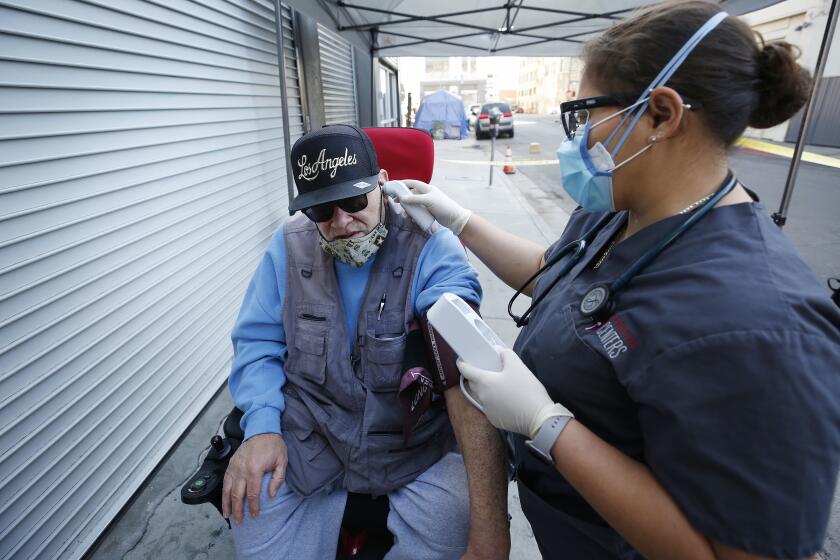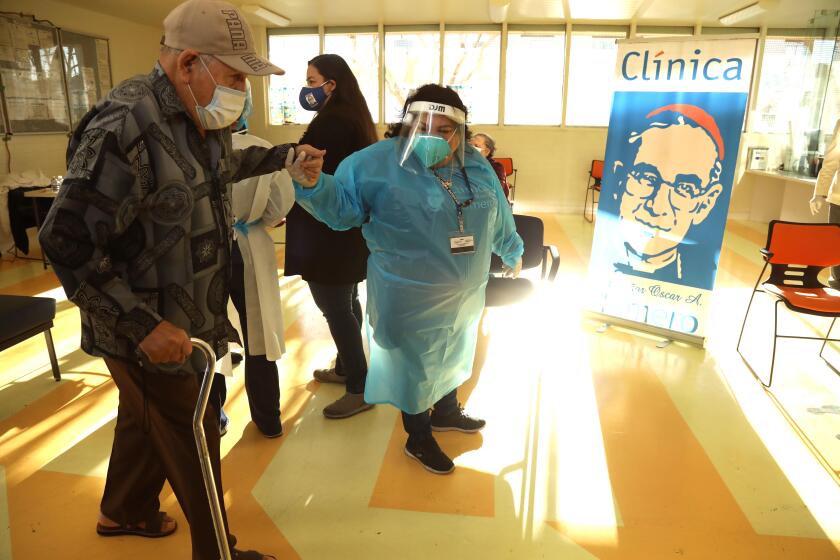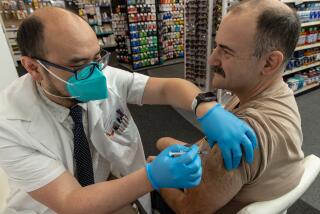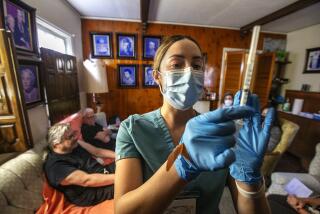Areas hardest hit by COVID-19 slow to get vaccine: âWe have a lot of work to do to fix thisâ
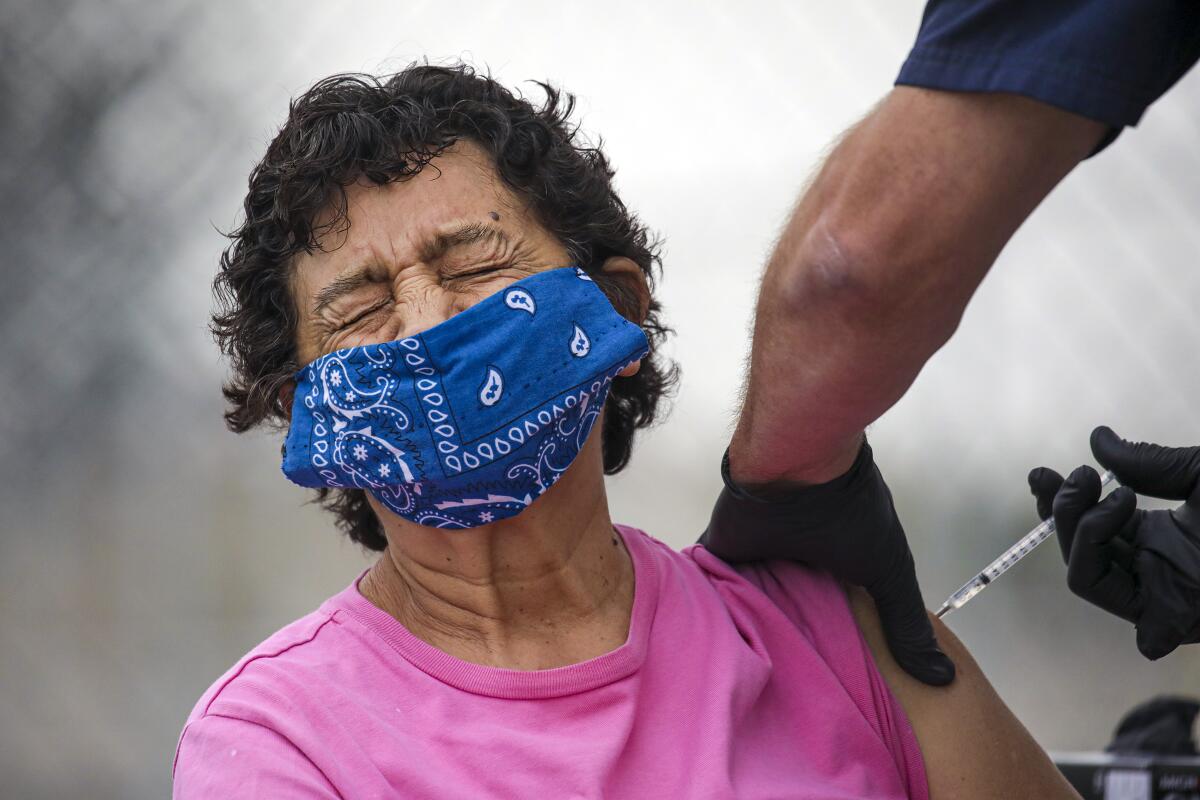
With COVID-19 vaccine still in short supply, state and local officials vowed Tuesday to make improvements to ensure doses are delivered equitably and that Californiaâs hardest-hit, harder-to-reach communities arenât left behind.
Recent data released by L.A. County showed that Black, Latino and Native American seniors were receiving COVID-19 vaccinations at a lower rate than white, Asian American and Pacific Islander seniors in the county.
âWe have a lot of work to do to fix this,â Public Health Director Barbara Ferrer said during Tuesdayâs Board of Supervisors meeting, âbecause however way you cut this data, itâs clear that in some of our hardest-hit communities, there are populations that are not getting vaccinated at the same rate as other groups.â
Overall, only 7% of Black residents age 65 and over have received at least one dose of the COVID-19 vaccine, according to county figures presented Monday. About 9% of Native American seniors and 14% of Latino seniors have received at least one dose â compared with 17% of white senior residents, 18% of Asian American and 29% of Native Hawaiian/Pacific Islander seniors.
âI think itâs important that we look at it as a two-prong issue. Itâs supply, and itâs equitable distribution of that albeit very limited supply,â L.A. County Supervisor Holly Mitchell said Tuesday.
As of Monday, the countyâs Department of Health Services, which serves thousands of low-income residents at its four public hospitals and about 30 clinics, had vaccinated 11,000 of its patients who were either at least 65 years old, healthcare workers or both.
L.A. County officials said they are concerned about low COVID-19 vaccination numbers among healthcare workers in South L.A. and other communities of color.
Among those vaccinated by the countyâs health services agency, 61% were Latino, 11% Asian, 9% Black, 3% white and 15% either multiracial, âotherâ race or unknown.
âWe are currently conducting about 1,200 vaccinations per day, but the volume is entirely dependent on supply,â Dr. Christina Ghaly, the agencyâs director, said during Tuesdayâs supervisors meeting.
Gov. Gavin Newsom said Tuesday that he planned to release statewide demographic data on vaccine distribution later this week, and foreshadowed it would âshow what we all knew it was going to show, that we have a lot of work to do in terms of addressing those gaps and those disparities.â
âWe have a unique responsibility and obligation to do more and do better,â he said.
Though the state is planning to collect and release vaccination data by race and ethnicity, much of that information is currently missing, and the collection process needs to improve, state epidemiologist Dr. Erica Pan said during a vaccine advisory committee meeting last week.
An emphasis is being placed on improving collection of demographic data as Blue Shield of California comes on board to administer the stateâs vaccine program. Incentive payments will be made to local healthcare providers based on their ability to meet certain metrics, such as collecting real-time data and administering vaccines to the most vulnerable communities.
âWe have to convince people that itâs OK to share it,â said Paul Markovich, Blue Shield of Californiaâs president and chief executive, referring to peopleâs personal information. âThatâs where I think we could use a lot of help â getting trust in the process.â
Most of L.A. Countyâs limited vaccine supply is going to giving second doses as local and state officials say they need more shots.
That information has been lacking throughout the country.
âWe cannot ensure an equitable vaccination program without data to guide us,â said Dr. Marcella Nunez-Smith at a briefing last week. Nunez-Smith leads President Bidenâs COVID-19 Health Equity Task Force.
âIâm worried about how behind we are,â she said. âWe must address these insufficient data points as an urgent priority.â
Federal officials also announced a new strategy Tuesday to send doses directly to community health centers, âenabling them to vaccinate more of the people they serve,â said White House press secretary Jen Psaki.
âThis announcement is another tool we are providing to state and local leaders in their work to reach underserved and hardest-hit populations,â she said during a briefing.
Officials in California have also said a key strategy in removing barriers to and allaying fears about vaccinations should involve tapping into already familiar and trusted resources in communities of need.
California is reserving large amounts of COVID-19 vaccine supply for people needing their second dose, leaving fewer first doses available.
But that must be done with care. Mitchell, whose Second District includes a significant percentage of the countyâs Black population, said itâs great for the county to open more vaccination sites in communities of color, but that many of them are frustrated because they have no control over who registers for their open appointments.
When residents hear of new vaccination sites opening in their communities, Mitchell said, the natural assumption is that they will be able to get their vaccines at those sites â but that hasnât happened at the rate it should.
âThatâs why our equity numbers are as paltry as they are,â Mitchell said.
Ferrer said she shares the frustration of federally qualified health centers, which predominantly serve low-income and uninsured residents and have to vaccinate whoever signs up.
âThey end up seeing not their patients, not their neighbors, but people coming ... from 50 miles away because they managed to snag an appointment,â Ferrer said. âAnd thatâs working against us.â
L.A. Supervisor Hilda Solis said the county must quickly get âboots on the groundâ in hard-hit communities of color.
This should include using mobile units to offer door-to-door vaccinations, especially to those residents who donât have vehicles or are homebound, Solis said.
âItâs not lost on me that African American and Latino communities are the ones that are really suffering the most,â said Solis, whose First District includes several predominantly Latino communities with high rates of coronavirus cases and deaths.
More to Read
Sign up for Essential California
The most important California stories and recommendations in your inbox every morning.
You may occasionally receive promotional content from the Los Angeles Times.
